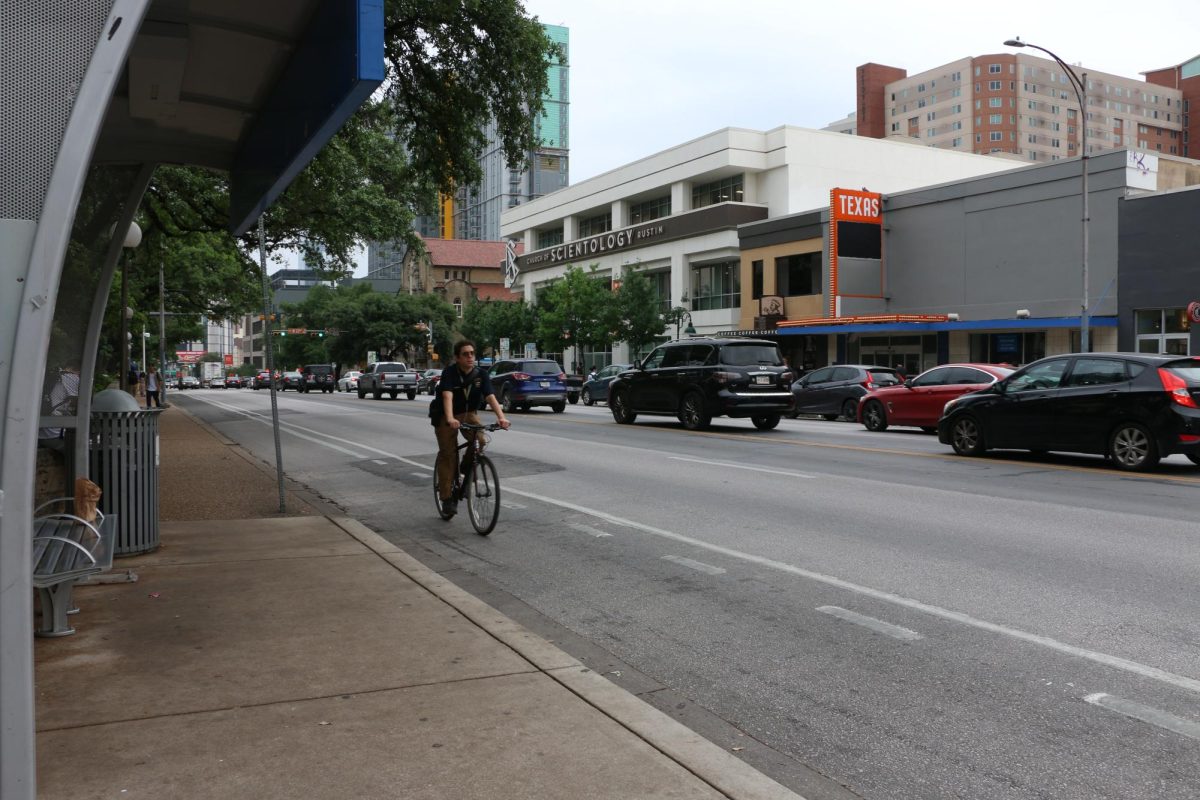Future students will most likely not experience the tin-shed classrooms that comprise part of UT’s nationally recognized top-10-ranked engineering school.
Plans to demolish the Academic and Computer Science Annexes – temporary classrooms students call “Shack 1” and “Shack 2” respectively – passed unanimously in committee at the Board of Regents meeting Thursday morning in Dallas.
The full Board will vote on the demolition, part of the Cockrell School of Engineering’s Strategic 13-year Master Plan, during today’s board meeting.
If approved, the $290 million construction project will start in 2011 and be completed by 2015.
Other engineering buildings, including the Engineering-Science Building, Service Building and W.R. Woolrich Labs, could also be raised as part of the plan. If the proposal passes, any money used to finance the project will have to come from private donors and other forms of state and system funding.
Having the plan approved by the Regents is the first step in a long process. If passed, the plan will be added to the UT System Capital Improvement Program, a six-year forecast of all major projects adopted by the System.
Engineering Dean Gregory Fenves said the plan will introduce new facilities while increasing the total square footage of the school by almost 38 percent. Fenves said the current buildings place UT’s engineering school at a competitive disadvantage in comparison to other schools.
“We are not in the ball game, and we risk falling further behind,” Fenves said.
The most imminent change in the plan will be the construction of the Engineering Education and Research Building, which will stand in the place of the current Engineering-Science Building.
According to the plan drafted by the Philadelphia-based Ballinger Architects, the Chemical and Petroleum Engineering Building, the Ernest Cockrell Jr. Hall and the Engineering Teaching Center II will all see minor to substantial modifications. Burdine Hall will be extensively modified in a joint effort by the Colleges of Engineering, Natural Science and Pharmacy.
Fenves said two of the plan’s focuses are learning and project-based teaching. While the traditional engineering departments will be maintained, the new buildings will each boast interdisciplinary research areas, which will allow collaboration between different departments and majors to occur in a common space. He also said the new facilities will accommodate room for student projects and for various state and national competitions.
The project will push the Cockrell School to a top-five ranking, attract new faculty and graduate students and bring in almost $1 million of additional grant money per year, Fenves said.
Fenves presented the plan to the Board’s Academic Affairs Committee, which is made up of Regents Janiece Longoria, Paul Foster, Colleen McHugh and Robert Stillwell.
“I don’t think anyone at the table can dispute the importance of engineering to the future of this state and to the University of Texas,” committee chairwoman Longoria said. “It appears to me that we at the Cockrell School of Engineering are very tall on talent but short on infrastructure, so I really appreciate the opportunity to hear about this and consider it today.”
President William Powers Jr., who was also at the meeting, said fundraising cannot begin until the project has been added to the System’s program. He said the plan is entirely contingent on funding from the Texas Legislature and, more importantly, private donors.
“It will continue to be a process going forward,” Powers said. “Given the economic conditions, it will be a project to get outside funding.”
Powers said the project will not be funded by tuition or other student fees.
Regent James Dannenbaum, a UT engineering alumnus, said the project will attract the necessary funding from private donors.
“As an engineer, I do want the board to know that the engineering alumni are absolutely euphoric about this project,” Dannenbaum said. “Dean Fenves is a superstar that has all of them excited and energized. I have a high degree of confidence that the philanthropy part of this project will be met and things will proceed as the dean has outlined.”
John Ekerdt, associate dean of engineering, said the project addresses the critical need of the college.
“The key is space,” Ekerdt said. “We have several buildings that are functionally obsolete, and we need to renew these facilities.”
According to the proposal, the Department of Electrical and Computer Engineering alone will be able to add nine new faculty members and 180 graduate students. Ekerdt said the proposal is referring to increased office space for new faculty and graduate students. The plan will also create office space for faculty at the J.J. Pickle Center Research Campus, who currently work in temporary buildings.
Ekerdt said the transition process of demolishing and rebuilding the sites will cause many faculty members to shift from their current offices, labs and classrooms.
“That’s one of the first things that will be addressed,” Ekerdt said. “It will be a problem because engineering and natural science programs that are located where the first proposed building is will need to find a home somewhere.”
Ekerdt said, despite the anticipated roadblocks, students and faculty are excited, especially when leaving the temporary tin-shed classrooms behind.
“It’s intended to be a destination for collaboration in an environment that wasn’t before,” Ekerdt said.




















